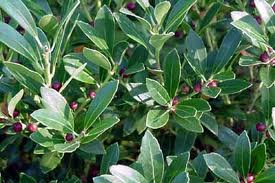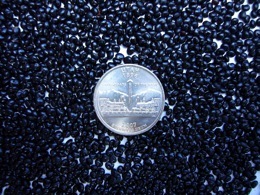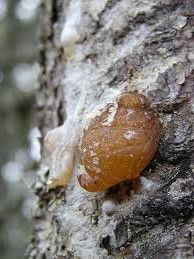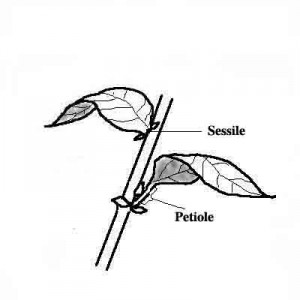From the Village Green
♣ There is a connection between this Halloween and foraging. On Halloween the world’s population hit 7 billion, according to the United Nations’ Population Fund. We reached one billion in 1804, two billion in 1927, four in 1974, five in 1987, six in 1998. The prediction is 8 billion by 2025, and 10 billion by 2083. Topping the list of issues are clean water, fuel costs and food. Where does foraging fit in?
Experts who ponder such things say without agriculture the earth can sustain only one million people by foraging. If all seven billion of us foraged the environment would be totally trashed. Without agriculture billions would starve. The argument is extended to include without Genetically Modified Foods agriculture can’t feed seven billion. It would seem a rock and a hard place issue though I am sure our site’s permaculture expert Maribou Thomas would have an interesting view on that. We expect to have his wisdom on board soon.
Fortunately, so to speak, foragers are an extreme minority, or an elite few if you prefer that view. While it is not physically possible for billions to forage conversely nearly all of those billions have little or no interest in foraging, at least now. Where food is scarce foraging is still rare. But perhaps more telling is even if someone wants to forage it takes time and effort. Therein lies the buffer.
Hungry people are quick to fish and hunt, slow to forage. Foraging is a skill and knowledge base that takes time to learn. You are building that skill and knowledge base. Billions are not. When man left the farm he left behind that common knowledge and options. For most of the world’s population agriculture is a necessity. For us few foragers it is not. It’s a small step towards independence, but a step nonetheless.
Incidentally, “foraging” used to mean going out in the countryside and getting food for your animals. In fact the word “forage” comes from an old word that means “fodder.” Then moving armies began to “forage” for food for themselves. From there “foraging” became an individual activity. In a way on Halloweed kids go out and “forage” for candy. On a related but separate issue, Halloween has changed. To read an editorial on that click here.
♣ Young and tender. You want to harvest a lot wild food when it is young and tender, the so-called “meristem” stage. Many of our cultivated crops are harvested at that age, lettuce comes to mind. The reason why is fairly easy to explain. Young plant cells have not yet specialized, they’re still growing, and still tender. Once they get some age they have other jobs to do than grow. That’s when they can get tough, or bitter, or turn into bark or seed hulls and the like.
Identifying plants when they are young is the next step in foraging. You can spot food before it become apparent, or, if you are a gardener it can help you decide whether to let a weed seedling stay or toss it onto the compost pile. Knowing a plant’s “meristem” stage also gets you some choice eats. As one might guess, there are books picturing seedlings in various juvenile stages. Most of them are regional, such as seedlings of the south, or midwest. It’s like getting a jump on the season.
That said the meristem stage is not limited to young plants. Plants that continue to grow usually have soft growing tips, such as the Bidens alba, or Spanish Needles. The plant itself can be fairly old but the tip is young and tender. This is why we nip off the top and take it home for dinner, and leave the tougher, older part of the plant to live on to seed.
♣ When you satisfy the I.T.E.M. requirements (Identification, Time of Year, Environment, and Method of Preparation) and you finally decide you have an edible wild plant and you’re 101% sure its edible… try only a small amount the first time. There are three excellent reasons for this.
The first reason is you still might have the wrong plant and it will probably let you know within the hour. If you have erred it is good to err in a small way. The next reason is to prepare your liver. Not all the foods we eat were naturally programmed into the enzyme database of our liver. When it detects a food not on its enzyme list it has to make the enzyme. That takes energy. If you eat a large amount of a food your liver hasn’t encountered it will make you sleepy and use that energy to make the necessary enzyme. This happens fairly often when one travels to a foreign country. A cup of greens you’ve never had can do it.
A third reason to try a small amount is you might have an allergy. This is true even if you don’t have allergies because as foragers we consume food that many of us have never encountered before. You really don’t know if you have a particular wild food allergy, or even a common foreign food allergy. I was not a person with allergies until I ran into Ilex glabra (Gallberry) when I was in my 40s. I like the tea it makes but it does’t like me. As I mention in my classes, if I drink I. glabra tea within 40 minutes I have to go pray to the porcelain god… the first time was a bit of a surprise.
The point is you never know when a new food, wild or foreign or untried might prove to be an allergen to you, or someone in your family, particularly children. They are much smaller and relatively new. It does’t take much to make them ill. So if you are person who doesn’t have any allergies — like me — always proceed carefully because you never know when you might find one. And as a side note, the people who get the worse, go-the-hospital cases of poison ivy are those who insist they aren’t allergic to it and keep on handling it.
♣ We’re closing in on the time of year when car batteries start to die. While you’re buying that new battery also pick up some new battery acid. Why? So you can have pokeweed greens during your next growing season. First, however, you have to have pokeweed seeds. That’s really not a problem. Collect the berries in the fall, put them in some water and let them rot for a couple of weeks. Drain through a fine strainer, rinse and air dry. Now what? Don’t plant them in the spring. First you have to soak them in battery acid, which replicates a bird’s gut. That increases germination from a few percent to nearly 100 percent. You soak them exactly 10 minutes in sulfuric acid. Longer soaking reduces germination. I use new battery acid from an auto parts store. You only use a little acid, so you will have enough to last for many years. Follow the warnings on the box. Once soaked, rinse with water, let air dry. Then you plant them in a row, like any green. Stagger planting by two weeks if you like. You will have young, tender poke greens in your garden. Or, throw them in some vacant lot where they’ll do no harm and then harvest from there. To learn more about pokeweed and what you can do with that fermented pokeweed water click here.
 ♣ A lot of folks chew gum. The ancient Greeks got it from one island in the Mediterranean. Locally chewable gum came from the Wild Dilly, Manilkara bahamensis. (To read more about the Wild Dilly click here.) When I was growing up spruce gum filled the bill. In fact, L.L. Bean used to sell spruce gum but whether it is the original any more is up for debate. Getting spruce sap to the point of having gum was a chore. It stuck to your teeth, tasted like spruce pitch but eventually you would get gum out of it, a small piece, and it only stayed soft as long as it was body temperature warm. Let it cool off and it hardened. Re-chewing it was an option but not pleasant so it was usually tossed which brings us to Rev7 which is a new biodegradable gum.
♣ A lot of folks chew gum. The ancient Greeks got it from one island in the Mediterranean. Locally chewable gum came from the Wild Dilly, Manilkara bahamensis. (To read more about the Wild Dilly click here.) When I was growing up spruce gum filled the bill. In fact, L.L. Bean used to sell spruce gum but whether it is the original any more is up for debate. Getting spruce sap to the point of having gum was a chore. It stuck to your teeth, tasted like spruce pitch but eventually you would get gum out of it, a small piece, and it only stayed soft as long as it was body temperature warm. Let it cool off and it hardened. Re-chewing it was an option but not pleasant so it was usually tossed which brings us to Rev7 which is a new biodegradable gum.
Throwing away gum isn’t any better for the environment than swallowing it is for your tummy because gum doesn’t biodegrade, and Americans chomp around 100 million pounds of gum every year (I think that’s 5,000 tons.) The new gum, Rev7, degrades into a powder in a few months after chewing. The problem is gum chewers don’t dispose of it properly, and even if they did it still sits in landfills for umpteen years. Cleaning gum off sidewalk is a major expense and pain of many cities. Singapore has banned the importation and regular chewing of gum. First-time offenders can be fined up to $1,000.
Rev7 is designed to degrade making cleaning easy. Usual gum is hydrophobic meaning does not mix with water. Things that dissolve immediately are hydrophilic read they mix well with water. Rev7 is amphiphilic, a combination of both. You can chew it but it also allows enough water to penetrate it that it will slowly break down. This means it can be removed from a sidewalk with normal cleaning techniques or in time it will just disintegrate. Rev7 comes in peppermint, spearmint, and cinnamon, not spruce.
♣ Botany Builder #2: Petiole (PET-ee-ol) and Sessile (SESS-sill) are handy words you will run into often learning to identify plants. Petiole is the small stem that attaches to the leaf to the main stem. Many leaves have a short stem that attaches to a larger stem. Many leafs have none. Tomato leaves have petioles. Oak leaves have petioles, and Maples leaves. To see a Basswood petiole click here. Other leaves attach directly to the stem. They are sessile. Corn leaves are sessile, they attach directly to the main stem. Sow thistle leaves are sessile, and how they attach to the main stem is a handy means of identification. If you want to see two ways how sessile sow thistle leaves attach to their stalk click here. (And ask a kid to say 10 times fast… sessile sow thistle…)
♣ Did you know? Non-dairy creamer is not non-dairy…well… it depends on the definition. Almost all non-dairy creamers has sodium caseinate in them. Sodium caseinate comes from cow’s milk, thus it is an animal product. But, as a derivative so it is not considered “dairy ” even though it comes from cow’s milk. It also does not have to be listed as a dairy product. That’s like saying cheese isn’t a dairy product because it is a derivative. Read the “non” dairy creamer’s label. Sodium caseinate is there. Green Deane knows these things.
To donate to the Green Deane Newsletter click here.








